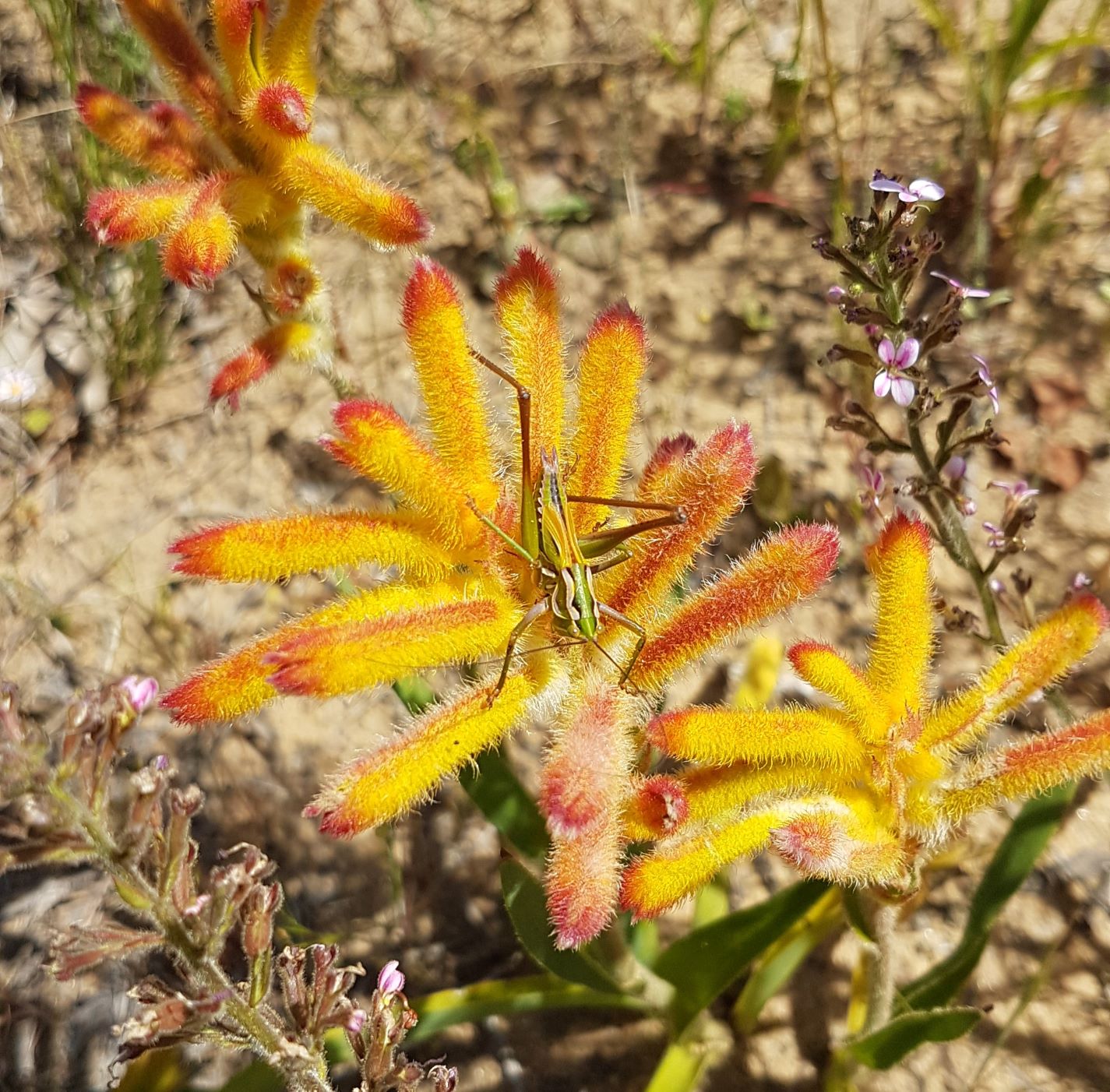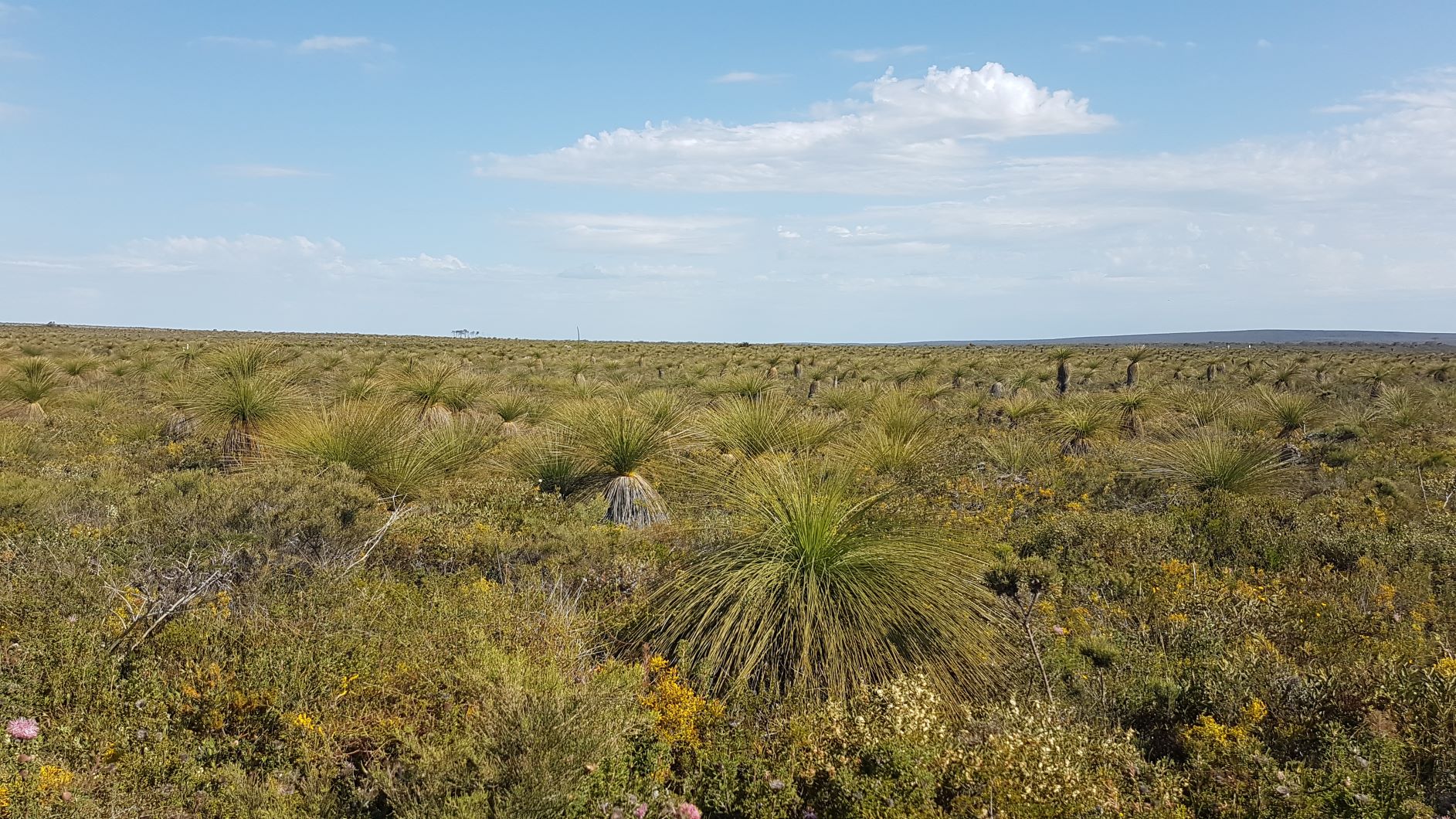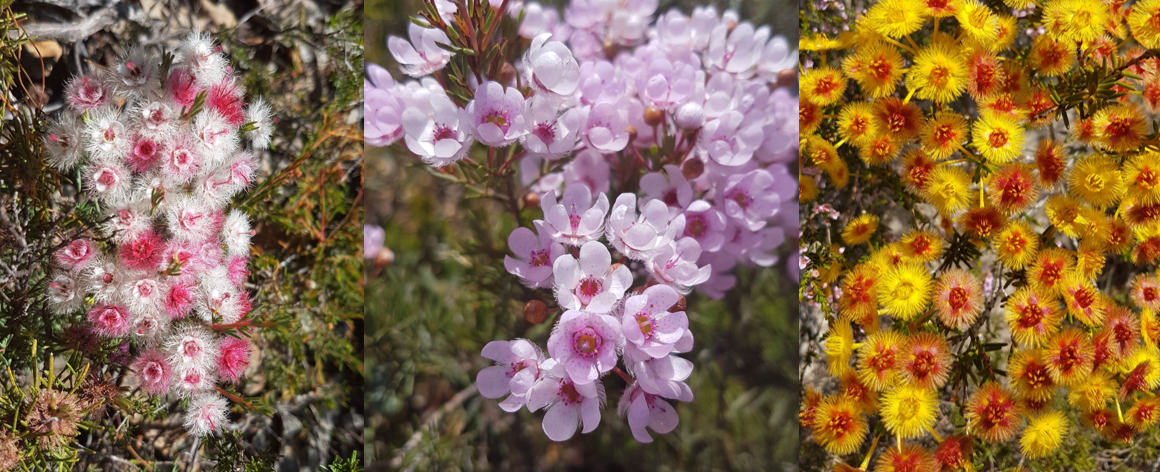Cat’s Paw (Anigozanthos humilis)
Lesueur National Park
My adventurous partner in crime & Kevin the Kia
One of the things that excited me most about moving to Western Australia was knowing I would be on the doorstep to one of the world’s global biodiversity hotspots! Last year, I did a road-trip with my partner in crime in our pimped camper van, Kevin the Kia Pregio. We bought and gutted the van in May 2018, and after giving it a fresh new lease on life one of our first priorities was to take it north of Perth to the centre of wildflower country. We probably won’t make it to the wildflowers north of Perth this year (sad face) because I now have my two fur babies living with us, which makes getaways a little more challenging. But we will be exploring the areas closer to home, around the Margaret River region. And this started just last week with a walk around Cape Naturaliste. The flowers are starting to come into bloom in the coastal heath of the headlands, signalling winter is in its final throes and spring is almost here. I can’t wait to get out and about to take more pictures of the stunning flora of this region.
L: Parrotbush (Banksia sessilis) R: Dampier's Rose (Diplolaena dampieri)
Leeuwin-Naturaliste National Park
L: Yellow Buttercup (Hibbertia sp.) R: Cockie’s Tongues (Templetonia retusa)
Leeuwin-Naturaliste National Park
The flora in the South West of Australia is some of the most unique and threatened in the world. There are lots of places that have high levels of biodiversity, but to be listed as a global hotspot under the criteria set by Conservation International, it must also have undergone a significant decline in its extent. This is invariably caused by clearing for agriculture, pastoralism or urban development. In some cases, as is the case here in the South West, diseases can be another
threat to native flora. Several organisations and programs are in place to implement actions that conserve what is left in hotspot areas, and for South West Australia, the Critical Ecosystem Partnership Fund (administered by Conservation International) and the Critical Regions program (administered by the World Wide Fund for Nature) are the two big ones.
Wild Violet (Hybanthus calycinus)
Leeuwin-Naturaliste National Park
The unique flora of the South West is so special because this particular corner of the continent is so isolated from everywhere else. Despite being connected to the east via the huge landmass that is Australia, the arid climate of much of central Australia and the sheer size of the place has meant that many species have stayed isolated in the South West corner, giving rise to a very special and geographically restricted array of species. The threat factor for the region to be listed as a hotspot comes from the historical conversion of the region to vast areas of agriculture, namely wheat farming. The ‘wheatbelt’ of the South West is a very important part of the economic profile of South West Australia, but its establishment and growth has come at a hefty cost. Who would have guessed in the late 1800s that the clearing that commenced in the region would result in more than 10% of Australia’s flora becoming threatened with extinction? We can’t go back in time and reverse this. Even in the knowledge that this would be the result, I am not so sure it would change anything.
A tourism operator summed it up for me on a trip last spring to the Turquoise Coast, arguably the most perfect gateway to the wildflower country. ‘The Government has wheat between the ears’. She gave me this response when I asked why it was that the sleepy motel she was managing was the only place we could buy a coffee or a glass of wine in the middle of spring.
Lesueur National Park
Nevertheless, we had an absolute blast exploring special places throughout the region. Standouts were Coalseam Conservation Park, the town of Mingenew, Lesueur National Park and driving along the coast back to Perth seeing the amazing sand dunes near Lanceline and Cervantes. The really neat thing about Lesueur National Park is the ring road you can drive through the park that takes you through so much stunning vegetation. A drive that should probably take about 30 minutes took us at least two hours. Stopping every 50 metres to take pictures of the next beautiful bloom made for a truly scenic drive, if you’re willing to get out of the car!
Featherflowers (Vericordia sp.) Lesueur National Park
I have spoken to my Dad at length about how regional Australia can and should be thinking outside the square when it comes to economic activity. He lives in Dalby, a little town about 2.5 hours from Brisbane. Due to a mixture of changes in the way Australia’s economy operates, Dalby and many other regional towns are finding themselves staring down the barrel of vanishing economic opportunity. It takes innovative thinkers and a willingness to change your way of thinking to see beyond ‘what we have always done’.
L-R: Kangaroo Paw (Anigozanthos manglesii), Pincushion Coneflower (Isopogon dubius), Pixie Mops (Petrophile linearis)
Lesueur National Park
Grey nomads provide a great example of how, if you offer something a little bit different or experiences that are unique to your part of the world, you will attract people to your town. They will spend money, they will take photos and share them on social media and they will tell their friends ‘you must go there’. They are less likely to be taking photos of farms, fields of grain or paddocks full of livestock (except maybe sheep with lambs – they are pretty cute). They are photographing the natural landscape, the wildlife, the flowers and themselves against the backdrop of these natural riches. They do take pictures of sites of cultural and historical significance. But the attraction lies in these as facets of our past. Not so much as a part of our future.
Trigger Plant (Stylidium schoenoides)
Wildflowers make a great tourism product, and I am pleased to see Mullewa and Mingenew taking the lead in marketing the scene of wildflowers in springtime on television at the moment. Head to the towns that value their nature and the visitors that come and pay to see it. We stopped in Mingenew for a quick look last year, and were pleasantly surprised. There is a cool bakery café with great coffee. The visitor centre is super cute, with lots of locally made crafts and souvenirs as well as helpful volunteers ready to give advice about where to go and what to see. We also make a point of visiting the local op-shops in country towns. The lady in the shop was making some bags out of the fabric from old clothes for the local homeless to carry their food and personal effects in. We bought a few things and left a bit of extra cash, in support of the good work she was doing.
Some places lack inspiration and innovation, and some surprise you. I would strongly urge you to make the effort to see the wildflowers of the South West Australian hotspot. Tell the local operators what you like and what you are willing to pay for. Write reviews online for the good experiences you have. Let’s get behind sustainable tourism initiatives, so that we can help regional Australia transition to an economy based on more diverse revenue streams. We live in one of, if not the best countries in the world. Get out and see it while you still can!












